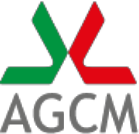REPORT ON MAXIMUM OPERATING CAPACITY OF MILAN'S LINATE AIRPORT
PRESS RELEASE
PRESS RELEASE
AIR TRANSPORT: ANTITRUST AUTHORITY ADVOCATES INCREASING SLOTS AT LINATE AIRPORT TO ALLOW ENTRY OF NEW OPERATORS
The administrative limit of 18 movements per hour now represent an unjustified restriction on competition in the light of the Alitalia-AirOne merger. An increase would improve choice at the airport and allow for greater competition on all domestic routes originating from this Milanese gateway. Recommendation sent to Parliament, the Government, to Enac, Enav and Assoclearance.
Review the limit of 18 movements per hour at Milan's Linate airport so as to increase supply and satisfy a considerable part of the demand which is at present systematically not satisfied, thus improving competitive conditions on all the domestic routes originating from this Milanese airport. This is the Antitrust Authority's message contained in a report approved today and sent to Parliament, to the Government, to Enac, Enav and Assoclearance; the report states that the limit now represents an unjustified competitive restriction.
In the view of the Italian Competition Authority, a provision increasing hourly movements, even if the limit were lower than the 32 movements technically possible (in order to take into account any other infrastructure and/or environmental restrictions), would make it possible to pursue benefits both in the development of competition and hence growth at the airport as well as for end consumers who would enjoy greater choice of flights out of Linate.
In its report, the Antitrust Authority recalls that the current limit is the result of a discretionary regulatory choice made on a basis that is no longer valid, being part of the distribution of air traffic amongst Milan's airports as set out in a Ministerial Decree of 5 January 2001 and applied by Enac and Assoclearance. The traffic data and demand for slots that Assoclearance is regularly unable to satisfy at the start of every IATA season are a factual demonstration that the hourly capacity limits for Linate were set at a level that is not only much lower than the theoretical capacity of the runway, but is also inadequate for the ever growing demand on the part of the airlines. This is a situation that therefore needs to be reviewed, especially in view of the new market context. Following the merger of Alitalia and AirOne to form CAI, there has practically been a monopoly on certain routes in and out of Linate, a situation that competition cannot correct because of a form of regulation that, by limiting the number of hourly movements, reduces the possibility for new operators to enter the field because slots are unavailable.
The recent approval by the European Parliament of a new Regulation whereby it is possible to override current rules and allow airlines to keep until the IATA Summer season 2010 those slots they previously operated, even if not fully used, makes the suggested increase in slots even more necessary.
Rome, 20 May 2009

